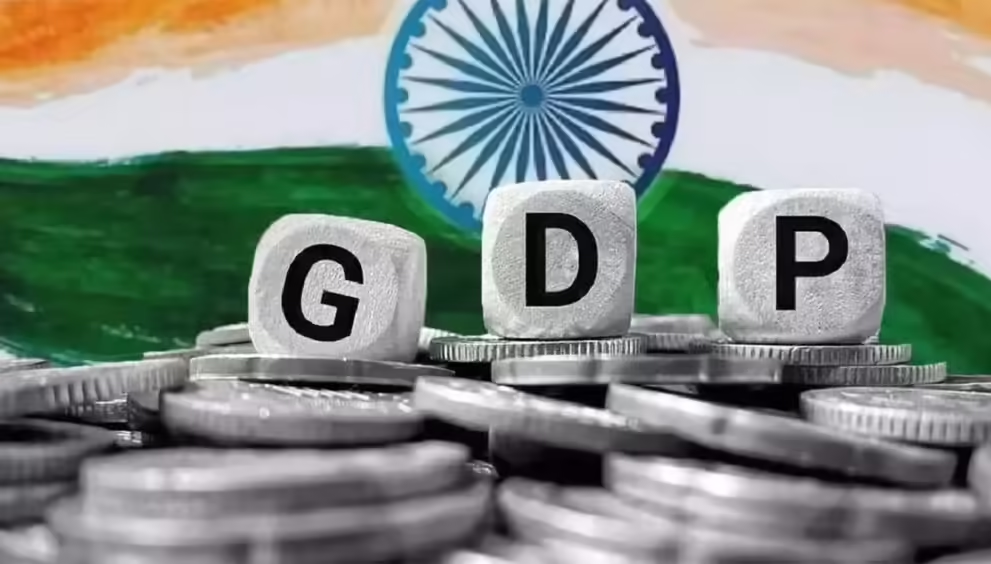India’s 7.8% GDP growth looks inflated: deflator math, not real demand, drives it.
MOSPI’s preliminary estimates put India’s real GDP growth at 7.8% in Q1 FY2025-26 (nominal GDP +8.8%), a jump that surprised many economists and markets. At face value this looks strong, but a closer read of how the “real” number is computed reveals why the headline likely overstates actual volume growth.
MOSPI’s press note also flags that these are early estimates and could be revised.
The Deflator Problem
Real GDP = Nominal GDP ÷ GDP deflator (roughly).
MOSPI’s Q1 print implies an implicit deflator growth of only about 1 percentage point (nominal +8.8% vs real +7.8%), which is unusually low given India’s services-heavy economy.
The reason: India’s GDP deflator is heavily influenced by wholesale price dynamics (WPI), historically used as the main deflator input, and WPI turned flat/negative in recent months (WPI YoY ≈ -0.1% in June 2025).
Meanwhile CPI (retail inflation) has fallen too (CPI ~2.1% in June 2025), but CPI measures retail prices and services better than WPI. Because the deflator construction relies strongly on WPI, whose basket excludes services, an unusually weak WPI reading pulls down the overall deflator and mechanically boosts “real” growth.
In short: deflator math (not volume gains) explains a good part of the 7.8% print.
Multiple commentators have highlighted this structural issue: India’s deflator calculation leans on WPI and CPI inputs and, in practice, has been more WPI sensitive, an odd fit for an economy where services now account for over half of GVA. That mismatch means GDP deflator moves can diverge from what consumers and services firms experience.
Sales Growth Lags Headline GDP
If the economy really expanded volume wise at nearly 8% in Q1, corporate toplines should show robust growth. But real world corporate data tell a different story. RBI/market surveys show sales of listed private non financial firms grew only ~5.5% YoY in Q1 FY26, and broader top company aggregates reported single digit sales growth, far below the official real GDP print.
Even select “Top 500” company tallies reported sales growth in the mid-single digits, reinforcing the disconnect between headline GDP and corporate performance. That gap is worrying because listed corporates are the organized economy’s growth engine; if their sales growth trails “real” GDP, it suggests the GDP number is being buoyed more by deflator mechanics than by underlying demand.
Services matter here too. MOSPI’s annexure shows tertiary (services) GVA contribution is roughly 54-59% of nominal GVA, yet the deflator’s reliance on goods oriented WPI undercounts service price moves. If services inflation is higher than goods inflation (and it often is for items like rents, professional fees, healthcare, education), the blended deflator understates price pressures and inflates real growth.
MOSPI’s own methodological notes remind users that quarterly estimates are compiled from multiple proxies and subject to revision, another reason to treat the early Q1 print cautiously.
Why Does This Matter?
The composition of the deflator has real consequences: monetary policy (RBI), fiscal calculations, investor expectations and corporate planning all depend on accurate real growth signals. If policymakers read an overstated real GDP print as stronger demand, they could delay needed support; if markets expect a growth boom, valuations and positioning may overshoot reality.
The mismatch also undermines public trust in official statistics when on-the-ground indicators (corporate sales, hiring, services activity) don’t match the headline. MOSPI’s press release explicitly cautions that improved data coverage and revisions could alter these estimates, a technical but meaningful caveat for anyone using the Q1 print as gospel.
Conclusion
MOSPI’s 7.8% Q1 print is not wrong technically, but it’s heavily shaped by a weak WPI driven deflator and early estimate methodology. With listed companies’ sales growing only mid-single digits and services under-measured in the deflator, treat the headline as an invitation to dig deeper, not as conclusive proof of an economic boom.





